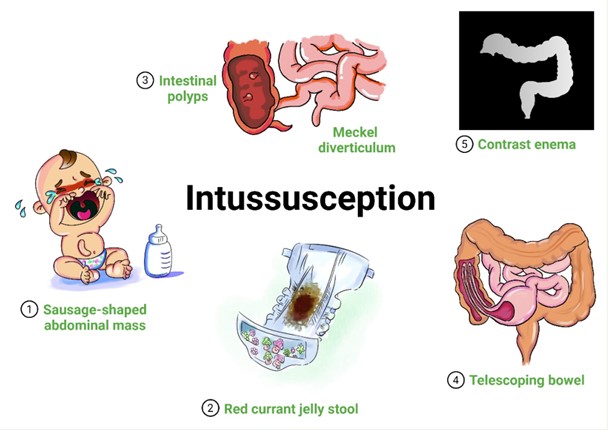The charge nurse is making assignments for one practical nurse (PN) and three registered nurses (RN) who are caring for neurologically compromised clients. Which client with which change in status is best to assign to the PN?
Viral meningitis whose temperature changed from 101° F (38.3°C) to 102° F (38.9° C).
Myxedema coma whose blood pressure changed from 80/50 mm Hg to 70/40 mm Hg.
Diabetic ketoacidosis whose Glasgow Coma Scale score changed from 10 to 7.
Subdural hematoma whose blood pressure changed from 150/80 mm Hg to 170/60 mm Hg.
The Correct Answer is A
A) Correct- Viral meningitis is an inflammation of the meninges (the protective membranes surrounding the brain and spinal cord) caused by a viral infection. While it can be serious, it is generally less severe than bacterial meningitis. Monitoring the client's temperature is an important aspect of care, as changes in temperature can indicate the progression of the illness or the effectiveness of interventions. A temperature increase from 101°F to 102°F is a subtle change but may still require close monitoring and symptom management. The practical nurse (PN) is capable of monitoring vital signs, including temperature, and reporting any changes to the registered nurse (RN) or healthcare provider. It is within the PN's scope of practice to assess and report changes in vital signs and general condition. The other scenarios involve more complex clinical situations that may require the expertise of registered nurses.
B) Incorrect- Myxedema coma is a severe form of hypothyroidism and is considered a medical emergency. Managing and assessing a client with myxedema coma requires advanced assessment, critical thinking, and interventions that are typically within the scope of registered nurses.
C) Incorrect- Diabetic ketoacidosis (DKA) is a complex condition that requires frequent monitoring of blood glucose levels, electrolytes, vital signs, and assessment of the level of consciousness. The change in the Glasgow Coma Scale score indicates a neurological deterioration that requires immediate attention and intervention, making it suitable for a registered nurse.
D) Incorrect- A subdural hematoma is a serious neurological condition that requires close monitoring of vital signs and neurological status. The change in blood pressure indicates a potential change in intracranial pressure and should be managed by registered nurses with expertise in neurological care.
Nursing Test Bank
Naxlex Comprehensive Predictor Exams
Related Questions
Correct Answer is D
Explanation
The correct answer is Choice D
Choice A rationale: Splinting with a pillow may reduce discomfort during movement or coughing by stabilizing the incision site, but it does not address acute postoperative pain with sympathetic overdrive. The elevated heart rate, respiratory rate, and blood pressure suggest a stress response mediated by catecholamines. Without analgesia, nociceptive signals continue to activate the hypothalamic-pituitary-adrenal axis. While splinting is supportive, it lacks the pharmacologic efficacy needed to blunt nociceptive transmission at the spinal or supraspinal level.
Choice B rationale: Assessing IV patency is a procedural prerequisite for medication administration but not a therapeutic intervention in itself. It does not directly address the pathophysiology of acute pain or the sympathetic surge evidenced by tachycardia and hypertension. Pain activates ascending pathways via A-delta and C fibers, requiring pharmacologic blockade. IV access assessment is necessary but secondary to the urgent need for analgesia to prevent complications like hypoxia, hyperventilation, or delayed recovery.
Choice C rationale: High Fowler positioning may improve diaphragmatic excursion and reduce pulmonary complications, but it does not mitigate visceral or incisional pain. In fact, increased intra-abdominal pressure from upright posture may exacerbate pain at the surgical site. Pain perception involves central sensitization and peripheral nociceptor activation, which are unaffected by positioning. The client’s pale skin and elevated vitals indicate systemic distress requiring analgesic intervention, not postural adjustment. Thus, this choice lacks direct analgesic benefit.
Choice D rationale: IV analgesics act rapidly to inhibit nociceptive transmission at the spinal cord and brainstem levels. Opioids bind to mu receptors, reducing neurotransmitter release and hyperpolarizing neurons, thereby dampening pain signals. This intervention directly targets the physiologic cause of elevated heart rate, respiratory rate, and blood pressure. Normal heart rate is 60–100 bpm, respiratory rate 12–20 breaths/min, and BP <120/80 mmHg. Prompt analgesia prevents complications like hypoxia, delayed healing, and neuroendocrine stress
Correct Answer is A
Explanation
The presenting symptoms of the infant, including persistent vomiting, poor skin turgor, significant weight loss, and a palpable abdominal mass, indicate a potential serious condition that requires immediate attention. These findings may suggest dehydration, malnutrition, and the presence of an abdominal mass that could be causing gastrointestinal obstruction or other underlying pathology.
Initiating a prescribed IV for parenteral fluid is the priority intervention to address the potential dehydration and fluid imbalance in the infant. This will help restore and maintain adequate hydration while further diagnostic evaluations and interventions are initiated.
Feeding the infant, giving 5% dextrose in water orally, or inserting a nasogastric tube for feeding should not be implemented as the first intervention in this case. It is important to stabilize the infant's fluid status before initiating oral feedings or other interventions to address the underlying cause of the symptoms.

Whether you are a student looking to ace your exams or a practicing nurse seeking to enhance your expertise , our nursing education contents will empower you with the confidence and competence to make a difference in the lives of patients and become a respected leader in the healthcare field.
Visit Naxlex, invest in your future and unlock endless possibilities with our unparalleled nursing education contents today
Report Wrong Answer on the Current Question
Do you disagree with the answer? If yes, what is your expected answer? Explain.
Kindly be descriptive with the issue you are facing.
